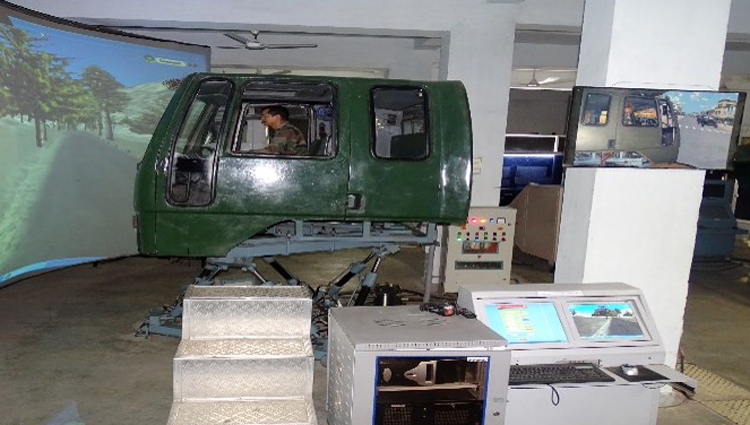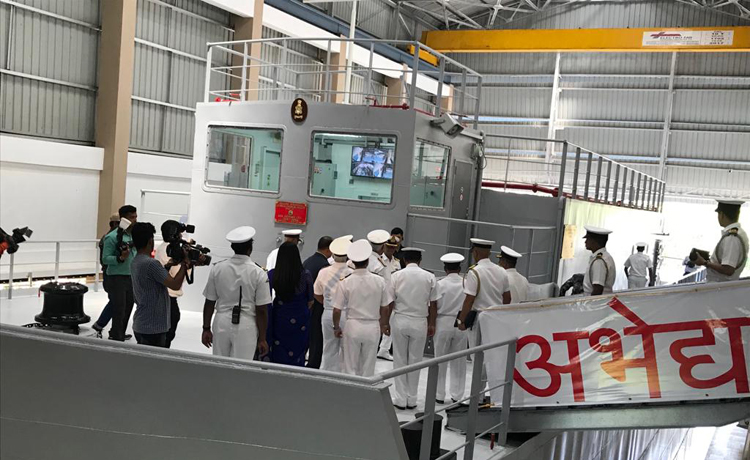INDIAN ARMED FORCES CHIEFS ON OUR RELENTLESS AND FOCUSED PUBLISHING EFFORTS

The insightful articles, inspiring narrations and analytical perspectives presented by the Editorial Team, establish an alluring connect with the reader. My compliments and best wishes to SP Guide Publications.

"Over the past 60 years, the growth of SP Guide Publications has mirrored the rising stature of Indian Navy. Its well-researched and informative magazines on Defence and Aerospace sector have served to shape an educated opinion of our military personnel, policy makers and the public alike. I wish SP's Publication team continued success, fair winds and following seas in all future endeavour!"

Since, its inception in 1964, SP Guide Publications has consistently demonstrated commitment to high-quality journalism in the aerospace and defence sectors, earning a well-deserved reputation as Asia's largest media house in this domain. I wish SP Guide Publications continued success in its pursuit of excellence.
Simulators for Armed Forces
The policy document lays emphasis on indigenous design and development as well as outsourcing of operation and maintenance of simulators to the Indian companies
 |
The Author is Former Director General of Information Systems and A Special Forces Veteran, Indian Army |

More you sweat in peace, less you bleed in war is an old maxim. The ability of Armed Forces to train and rehearse with tremendous efficiency and effectiveness has made the difference between success and failure in recent conflicts saving precious lives. High-tech systems and platforms require well trained people and simulation has become an invaluable tool in training since it helps improve combat efficiency, preserving the platforms and weapons system at the same time.
The policy will be applicable to all types of simulators in use/ to be procured in the future by the Armed Forces
On September 23, 2021, the government took a decision to synergise the use simulators in the forces. A statement released read, “The Ministry of Defence (MoD) has promulgated the framework for enhanced and synergised utilisation of simulators by the Indian Army, the Indian Navy, the Indian Air Force (IAF) and the Indian Coast Guard (ICG). The overarching vision is to transform to simulation-based training across all military domains for combatants, leaders, maintainers, administrators, life science experts, procurement and financial agencies and thus, achieve cost effective, efficient, safe, fast-paced and smart training.”

The policy document titled ‘Framework for Simulators in Armed Forces’ with the motto ‘Fight as you train - Train as you fight’ lays emphasis on indigenous design and development as well as outsourcing of operation and maintenance of simulators to the Indian companies. The goals and objectives defined are: to reduce live equipment utilisation with enhanced utilisation of simulators; to ensure capability plans cater for phased induction of simulators; to duly factor requirement of simulators at the planning stage of procurement as applicable; to coordinate among various agencies of the government and factor combined requirements of simulators during procurement and utilisation, and; to promote Services interaction with Indian industry to enhance indigenisation.
The policy says that the strong eco-system in the defence sector and the MSME base in India provide the potential for India to be a hub for production, operation and MRO for simulators
The policy will be applicable to all types of simulators in use/to be procured in the future by the Armed Forces. The policy would be applicable to but not restricted to following entities: aerial vehicles (manned and unmanned); land vehicles (specialist and common user vehicles); maritime vehicles; specialist equipment Including earthmoving and works services related; weapon and sensors system; EW trainers for air and ground systems; Cyber operational Architecture Training System (COATS); small arms and marksmanship; firefighting; damage control; maritime systems/underwater escape, battlefield, tactical, air combat and squad/soldier multi-domain virtual trainer; virtual boot camp; air traffic and aircraft control simulators; strategic systems; war gaming; medical and life sciences; system maintenance and fault finding; simulation, forecasting and project management tools; design development and system Integration, and; testing and certification simulation tools, mission planning/briefing/debriefing.

Nodal Agencies for implementing the framework will be as follows:
- Services Headquarters through designated Directorates. To identify new areas of application of simulators and enhance exploitation of simulation in all facets of operations, maintenance, administration,medical science and work services resulting in optimisation of live training efforts, and formulate appropriate policies, syllabus, acquisition plans and monitoring mechanisms to achieve this.
- HQ Integrated Defence Staff (IDS). To formulate overarching policy to optimise utilisation of simulators in Armed Forces.
- Department of Defence Production (DoPD) under MoD. To encourage and nurture indigenous development and production of existing and future simulators through both public and private defence industries, as also task SIDM to liaise with all stakeholders to prepare six-monthly report on industries’ capability and capacity.
- Centre for Artificial Intelligence and Robotics (CAIR) under DRDO. To coordinate efforts in the Public and Private sector for research and development of future technologies related to simulation in defence.
- Acquisition Wing of MoD. To modify Defence Acquisition Procedure (DAP) 2020 to ensure that simulators are procured along with the associated operational equipment/ systems.
The framework lays down that next generation synthetic trainers should bring to bear latest training solutions and technology under development and consideration globally like: cyber safe networking of simulators; wearable technologies; field deployable simulation; blended multi domain large force training solutions; mission rehearsal tools with personalised and adaptive learning; augmented and virtual reality based simulators; embedding of artificial intelligence (AI) to generate and predict newer tactics/concept to train in variable combat environment. CAIR in consultation with Services HQ and HQ IDS to formulate a roadmap for future technology development/ acquisition plan.
The DDP and the Industry may get into long term partnership with an implementable action plan for development and production of simulators
In terms of indigenisation, the policy says that the strong eco-system in the defence sector and the micro, small and medium enterprises (MSME) base in India provide the potential for India to be a hub for production, operation and MRO for simulators, for both domestic and global markets. The DoDP and the Industry may get into long term partnership with an implementable action plan for development and production of simulators. The effectiveness of the Framework is to be reviewed at an interval of every three years and revision if required would be promulgated accordingly.
The real benefit will come through implementation of the policy in a speedy but pragmatic manner
The framework is timely as more technology is coming in the Armed Forces. The real benefit will come through implementation of the policy in a speedy but pragmatic manner to revitalise the exploitation of simulators. However, review of the framework and its implementationshould be on yearly basis (not three-yearly) taking the cue from DAP 2020. This framework already demands MoD to modify DAP 2020. Also, DAP 2020 had dropped the “offset clause” but now government has signed an “offset contract” with Airbus Defence and Space for latter to discharge its obligations through direct purchase of eligible products and services from Indian offset partners. Similarly, there may be many hiccups in implementing this framework that should not have to wait for three years to be resolved. Also the framework mentions ICG as the fourth armed force which it is not. ICG is maritime law enforcement and search and rescue agency which is presently under MoD but the Ministry of Home Affairs (MHA) wants to bring under its command, in which it will succeed.





